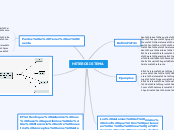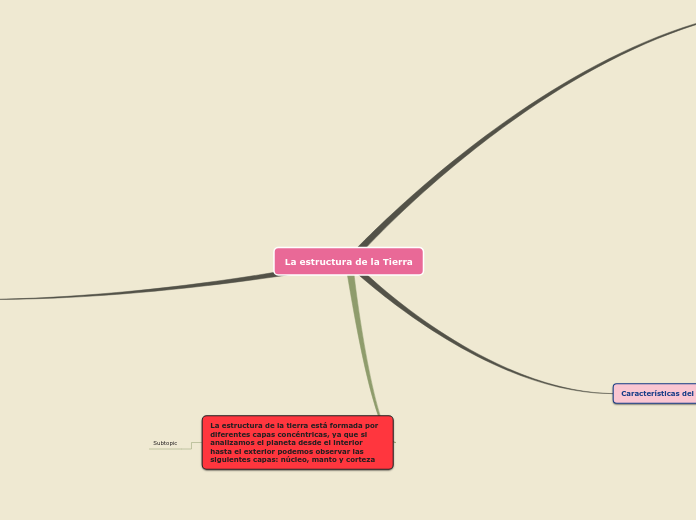EL TRONCO O TALLO CEREBRAL:
MÉDULA ESPINAL: Está situada en un canal semicerrado, llamado canal vertebral.
Tiene 31 pares de nervios por los cuales corren los estímulos nerviosos del cerebro al Sistema Nervioso Periférico.
EL TÁLAMO Y EL HIPOTÁLAMO: Se encuentran entre el tronco cerebral y el cerebro
La protuberancia anular o Puente de Varolio se localiza arriba del bulbo raquídeo; influye en la transición entre dormir y despertarse y entre los diversos estadios del sueño.
El bulbo raquídeo, controla diversas funciones autónomas, como la frecuencia respiratoria y cardiaca la deglución, la tos, el hipo, el parpadeo, el vómito y el estornudo
Está ubicado por debajo del cerebelo y conecta el encéfalo y la médula espinal.
La corteza cerebral se divide en: lóbulo frontal, lóbulo temporal, lóbulo occipital, lóbulo pariental.
El cerebelo: Es la segunda región más grande del encéfalo.
Está ubicado en la parte posterior del cráneo.
Se encarga de mantener el equilibrio, la postura, el tono muscular y ayuda a la coordinación de movimientos finos.
El cerebro: El cerebro tiene dos capas:
La externa o corteza (materia gris), formada por muchos cuerpos neuronales. La corteza procesa la información de los órganos sensoriales y controla movimientos. La interna es de materia blanca, formada por axones con vainas de mielina. Conecta la corteza cerebral con el tronco cerebral.
Desarrollo de las Inteligencias Multiples
To name your story, you have to think about the overall message and what you want your audience to understand from the story. Also, make it relevant and easy to remember.
SISTEMA NERVIOSO PERIFÉRICO
The ending of a story is essential. We all know that if the ending is weak, what happened before loses its importance. So make it unpredictable, but fair. A resolved ending answers all the questions and ties up any loose threads from the plot.
SISTEMA AUTÓNOMO
This is the closure section of the story.
See examples of possible outcomes below:
- all problems have been solved
- it's clear how each one of your characters ends up
- your main character is transformed by the challenge
Sistema Parasimpático:Mantiene la homeostasis (equilibrio) del organismo, tiende a regular las funciones de los órganos internos, ejem: regula el flujo de sangre al tracto gastrointestinal. Domina la función orgánica cuando NO hay muchos estímulos (NO stress).2
Sistema Simpático:
Tiende a inhibir la homeostasis, incrementa la interacción del organismo con el medio externo
Try answering these questions to come up with a closure:
- Have all the problems been solved?
- Is there a clear picture of what happens with each character in the story?
- Has the challenge transformed your main character?
- How do the characters feel in the end?
Es un sistema consistente en 31 pares de nervios espinales o raquídeos, los cuales están conectados con la médula espinal.
This is the moment when the main character surpasses the last obstacle and finally faces their greatest challenge.
The climax usually follows one of these patterns:
- realization
- resolution
- choice
Type in your answer.
Está formado también por 12 pares de nervios craneales, quienes se conectan directamente con el cerebro, y se divide en dos
Sistema autónomo. Se conecta con órganos y estructuras involuntarias, control inconsciente e interno, conectándose con músculos lisos , músculo cardiaco y algunas glándulas 2
Se subdivide en simpático y parasimpático, cuyas acciones son antagonistas (opuestas)
Sistema somático: El cual se conecta con músculos esqueléticos involucrados con los movimientos voluntarios del cuerpo y con las sensaciones de la piel.
Estructura y función de la sinapsis
The middle of the story is where you add layers of complications that will lead to the end. Reveal more about the character's journey. Did their personality go through changes? How did they overcome the challenges? And as you build up the story’s central conflict, make it more personal to that character. Also, from the middle act, you have to lead into the final act.
Componentes del sistema nervioso central
There wouldn't be any tension and excitement in your story if there weren't any obstacles in your character's way.
Senos venosos, sistema ventricular, plexos coroideos, meninges, espacio subaracnoídeo, sustancia blanca, sustancia gris.
A story is nothing more than a character overcoming a series of difficulties to reach the desired goal. Obstacles usually create suspense and conflict. In overcoming obstacles, there is growth: weak becomes strong; hatred turns into love; sadness into happiness; wrong into right; lies into truth; or evil becomes good.
See a few examples below:
- stopping a meteor
- finding a killer
- finding love
encéfalo: el cerebro es la región más grande y destacada del encéfalo
meninges
SISTEMA NERVIOSO CENTRAL
Your character(s) need(s) motivation in order to solve the challenge(s).
Formado por Encéfalo y por la Médula espinal
Protegido por cráneo y vértebras respectivamente.
Su función es transmitir mensajes, procesar y analizar información.
Why does your character need to confront this challenge? What does he/she expect to accomplish by solving it?
See a few examples:
- will marry in 3 days
- can fix the mistakes of the past
1 Inicia acción, 2 Potencial de
acción llega a las terminaciones, 3 Neurotransmisor
es liberado, 4 Se une el neurotransmisor
y se abren los canales.
Each story has a main character and that character usually needs to solve a problem or challenge. The character's challenge is the one that creates tension throughout the story.
Sistema Nervioso Periférico (SNP) Neuronas motoras, Neuronas sensitivas, Sistema Nervioso Somático, Sistema Nervioso Autónomo, S. N. simpático, S. N. Parasimpático
.
Sistema Nervioso Central (SNC)
In most stories, there are 3 challenges. The number 3 is a mystical number symbolizing completeness. Try to come up with interesting challenges with which your character needs to struggle.
See a few examples below:
- turns into a werewolf at night
- is sent back in time
Médula espinal
Encéfalo
Topic principal
Bases bilógicas de las inteligencias múltiples, (el sistema nervioso)
In the beginning of the story (or the exposition), you will need to introduce the setting and characters. You might also want to introduce the main conflict. This part of the story is important because it gives the reader necessary background information and maybe even a first insight into a character’s personality.
Funciones de las neuronas
The setting (time & place) of a story can change throughout the plot.
Subtopic
Transmitir a otras neuronas, glándulas o músculos. 2
Sensory details include sight, sound, touch, smell, and taste. These details are important because they create depth in your setting.
See a few examples below:
- the smell of fresh bread
- the scent of freshly cut grass
- rain falling onto the windshield etc.
Conducir la señal a su terminación.
The weather is an important element in your story because it can highly influence the ambiance and the mood of the characters.
Integrar la información recibida y producir una señal de respuesta.
The time of the story can also change. It can describe the event of a single day or can include an entire year's plot. Anyway, don't forget to mention it.
Recibir información del medio interno, externo y de otras neuronas.
Your story can take place wherever your imagination will take you to.
For example: in an elevator, in an enchanted forest, etc. Don't forget to give details of the environment each time the setting changes, otherwise, the story can be confusing. Also, mention the seasons as each of them has unique weather and events.
LA NEURONA MANTIENE EL GRADIENTE IÓNICO (diferencia)
Estructura de una neurona, terminal sináptica; Son dilataciones que se encuentran en las terminaciones ramificadas de los axones o dendritas.
Dendritas, cuerpo o soma, vaina de mielina, axón de otra neurona, axón, dendritas de otras neuronas.
Estructura de una neurona
Neuronas motoras.
Neuronas de asociación o internunciales.
Neuronas sensitivas
Tipos de Neuronas










